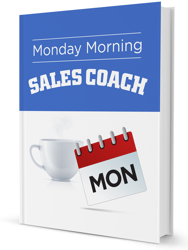Sending Information? Mutilate It First
Problem: Marketing departments have a love/hate relationship with salespeople. They “hate” them (sometimes) because they feel their products and services would sell better if the salespeople knew what they were doing, but they love ‘em because they are great consumers of all the product literature, brochures, fliers, etc. that marketing departments tend to crank out. Let’s face it, salespeople still have a tendency to send information to prospects every chance they get. When a prospect says, “Send me some literature,” most salespeople interpret this request as sincere interest and are optimistic that they’ve got a “live one.” But rarely does mailing literature result in a positive outcome. Prospects can’t recall receiving it, plead they haven’t had time to read it or simply don’t return the salesperson’s calls.
Analysis: Although most salespeople are beginning to understand that a literature request is often a put-off, they still have a tendency to send it on request. Why? First, most prospects disguise indifference in an attempt to get rid of salespeople. “Send me some literature” gets most salespeople off the phone quickly. Secondly, hope springs eternal. Salespeople feel that if the prospect gets the information and actually reads it, the “compelling” sales story may get a positive response. Finally, no one likes rejection. No appointment and no next step (like sending literature) is a “no” – rejection. “Got to avoid this at all costs,” the little guy inside our head tells us.
Solution: Our recommendation is to avoid sending literature unless you have a really compelling reason for doing so and have a good meeting agreement with the prospect as to what will happen after he receives it. If you absolutely have to send literature, make it easy for your prospect to read it. Mutilate it!
You want the prospect to look at enough of the information to understand your message and want to read more. Here are some tips for getting your literature read. Mark important passages with a brightly colored green hiliter (decision-makers are often driver types and green attracts their attention, surveys show). Take a bold felt tip pen and draw arrows to important things and write, “read this.” Use post-it notes for added emphasis. Attach your business card with the back (blank) side showing and write on it “here’s the info you wanted me to send.” All of this says to the prospect, “Read me, I’m different.” With all this clutter, it would be difficult not to get noticed and you’re saving your prospect time by making your message easier to read.


